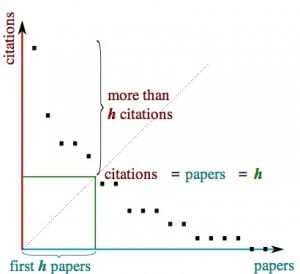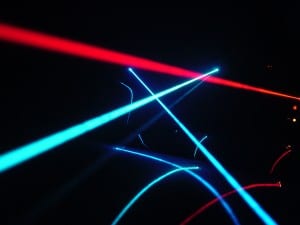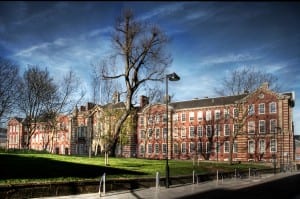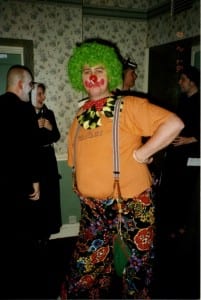
This provides average citation rates by subject area for journal articles indexed by Thomson Reuters, and is restricted to items coded as regular articles and reviews.
Research activity at the University of Lincoln

An example researcher would have an index of h if he has published h papers, each of which has been independently cited least h times. The bottom line here is that the h-index combines the number of publications and the number of citations per publication into a single metric.
The major caveat here is that it only works properly only for comparing academics in the same field since citation density differs widely among different fields.
 Location: Engineering Lecture Room, Think Tank, Ruston Way, Lincoln, LN6 7FL (Next to Pavilions).
Location: Engineering Lecture Room, Think Tank, Ruston Way, Lincoln, LN6 7FL (Next to Pavilions).
Date: 06/04/2011
Time: 2:00p.m. – 3:00 p.m.
Organization: Lincoln School of Engineering
Summary
Wed 6th April 2011 @ 2:00p.m. – 3:00p.m. Lincoln School of Engineering Open Seminar Series. Dr. David Waugh will be speaking about ‘Using lasers to modulate biological cell response’.
Abstract
With an aging population there is an ever growing demand on medical facilities, especially with regard to biological implant technology. Laser surface treatment offers a unique way of tailoring surfaces to manipulate cell response in order to reduce and predict clinical failure. This open seminar will give you an insight into the multidisciplinary research carried out by Dr. Waugh, a Research Fellow in the Lincoln School of Engineering. The seminar will discuss work in the field of laser-modified wettability characteristics and how they can be employed to determine the biofunctionality of a given material. Furthermore, the future for this research will be discussed including potential use of this technology in stem cell growth and manipulation.
Call for Papers
To submit a manuscript or learn more about J-PV visit the web site: http://eds.ieee.org/jpv.html.
In response to the rapid expansion of research in photovoltaics, the IEEE is pleased to announce establishment of the Journal of Photovoltaics (J-PV). The Electron Devices Society with co-sponsorship from six other IEEE groups has launched this peer-reviewed, archival publication to report original and significant research results that advance the field of PV.
Journal Scope
Fundamentals and New Concepts – Editor: Prof. Steven Ringel, Ohio St. Univ.
Nanostructured materials, low-dimensional physics, multiple charge generation, up/down converters, thermophotovoltaics, hot-carrier effects, plasmonics, metamorphic materials, luminescent concentrators, novel light trapping, and rectennas.
Organic PV – Editor: Professor Alex K-Y. Jen, Univ. Washington
Polymer, hybrid and dye sensitized solar cells, new device concepts including QD, CNTs and graphene composites, tandem cells, modeling, synthesis and evaluation of new materials; high performance contacts; lifetime degradation and mechanisms.
Crystalline Silicon PV – Editor: Dr. Stefan Glunz, Fraunhofer Inst. Solar Energy Systems
Feedstock materials and crystal growth; defect characterization and passivation; advanced optics for light trapping and reflection control; new cell designs; device modeling; advanced measurement techniques; and solutions for large scale manufacturing
Amorphous, Nanostructured, and Film Si PV – Editor: Dr. Michio Kondo, Japan AIST
Microstructure characterization, light induced degradation, film oxidation; large throughput, large area, high deposition rates, novel processing routes; new thin silicon concepts, light trapping, multi-layers, plasmonic enhancement, photonic structures, TCOs; long-term reliability
Thin Film PV – Editor: Dr. Rommel Noufi, NREL
Including CdTe, CIGS, earth abundant and wide band gap absorbers, novel device structures, tandem structures, thin-film deposition, modeling, electrically active defects, substrates, TCOs, alternative buffers and contacts, process control, moisture barriers and other measures related to stability/reliability.
III-V, Concentrator and Space PV – Editor: Dr. Richard R. King, Spectrolab, Inc.
III-V systems including theoretical device modeling, epitaxy, solar cell processing, characterization, and system integration; lower concentration Si solar cells, novel concentrators and optics, reliability, and testing; space PV including reliability, environmental effects, protective materials, and cell qualification.
Photovoltaic Balance of Systems Editor: Prof. Angèle H.M.E. Reinders, Delft Univ. Tech.
PV module materials, durability and the performance of PV modules; irradiance resources and testing protocols, power conditioning of inverters, batteries and other BOS components; large scale grid-connected PV, BIPV and residential installations; system integrated PV.
PV Characterization – Editor: Prof. Clemens Heske, Univ. Nevada, Las Vegas
Methods of characterization of PV materials and devices, including characterization of structural, optical, electrical, and electronic properties; novel methods ranging from state-of-the-art spectroscopy to advanced imaging; characterization methods from wafer to module scale; and in-line approaches.
PV Systems Control – Editor: Prof. Giovanni Spagnuolo, Univ. Salerno
Control circuits, systems and methodologies, MPPT-related issues, performance assessment, thermal hybrid systems control, grid-connected and stand alone systems control, grid connection and stability.
PV Systems-Grid Interactions – Editor: Benjamin Kroposki, NREL
PV systems, including modules, power conditioning, inverters, balance-of-systems components, monitoring and control of grid-connected PV installations, analyses and simulation of integrated PV systems.
Editor-in-Chief: Prof. Tim Anderson, Univ. Florida
The intent of J-PV is to publish original research results that are of primary interest to the photovoltaic specialist. Regular, Briefs, Review and Correspondence papers on these subjects are now being accepted. To submit a manuscript or learn more about J-PV visit the web site: http://eds.ieee.org/jpv.html.
The J-PV is sponsored by the following IEEE Societies and Councils:

Way back in another millennium, I was a hard up first year undergraduate in Control Engineering at Sheffield University, and overheard a conversation that a disabled PhD student in the Electrical Engineering Department had a grant to pay for a part-time lab technician to build rigs etc. for his research. I presented myself in the Mappin Building (pictured) the next morning at 9.00am, of course the PhD student in question didn’t roll up till mid-day! My first lesson about academia.
Keith Leonard was the PhD researcher in question, and he gave me the job. Now in addition to my degree, I was spending all my spare time building power electronics, data acquisition systems and learning how to programme in assembler and ‘C’ for real time control. I was also (although I didn’t know it then) about to embark on a 16 year association with the Department’s Electrical Machines and Drives Group (EMD). The group had a reputation for working and playing hard, and had risen to being one of the biggest and best of its kind in Europe. This was the turning point for me, I couldn’t believe how exciting research was, and fired me up to set goals to become a researcher.
Of course I still had the business of finishing my degree, and spent the final substantial part of it in one of the EMD labs completing my final year project in Real-Time Fuzzy Logic Control. The important thing here is that Engineering has been doing its own version of ‘student as producer’ for a long, long time. Lecturers tend to be research active, degrees are very ‘hands on’, projects are real-life problems, and funding has historically been there to encourage and retain students into research. I had no idea about the mechanics of research and publishing, so it wasn’t until much later that I realised the significance of my undergrad project and published on it:
Stewart P., Stone D.A. and Fleming P.J. “Design of robust fuzzy-logic control systems by multi-objective evolutionary methods with hardware in the loop” IFAC Journal of Engineering Applications of Artificial Intelligence, Vol.70, no.3, pp.275-284, May 2004.

I guess that really is ‘student as producer’. However the real story here is capturing people’s attention and firing their enthusiasm to become active researchers. My story started as an undergrad in Lab D137 in the Mappin Building, a lab which was always my home more than any office became. Chris Bingham (now here at Lincoln as Professor of Energy Conversion in the School of Engineering) joined the group in 1994 from Cranfield, and we started what has turned out to be a very long-standing research collaboration.
Keith never finished his PhD, but he was still an excellent researcher, shame he couldn’t have written his thesis on beer, kebabs and curry. He inspired me, and I wouldn’t be here doing what I do without Keith.
Keith died last week, and we will miss him.
Cheers Keith, RIP, thanks for everything.